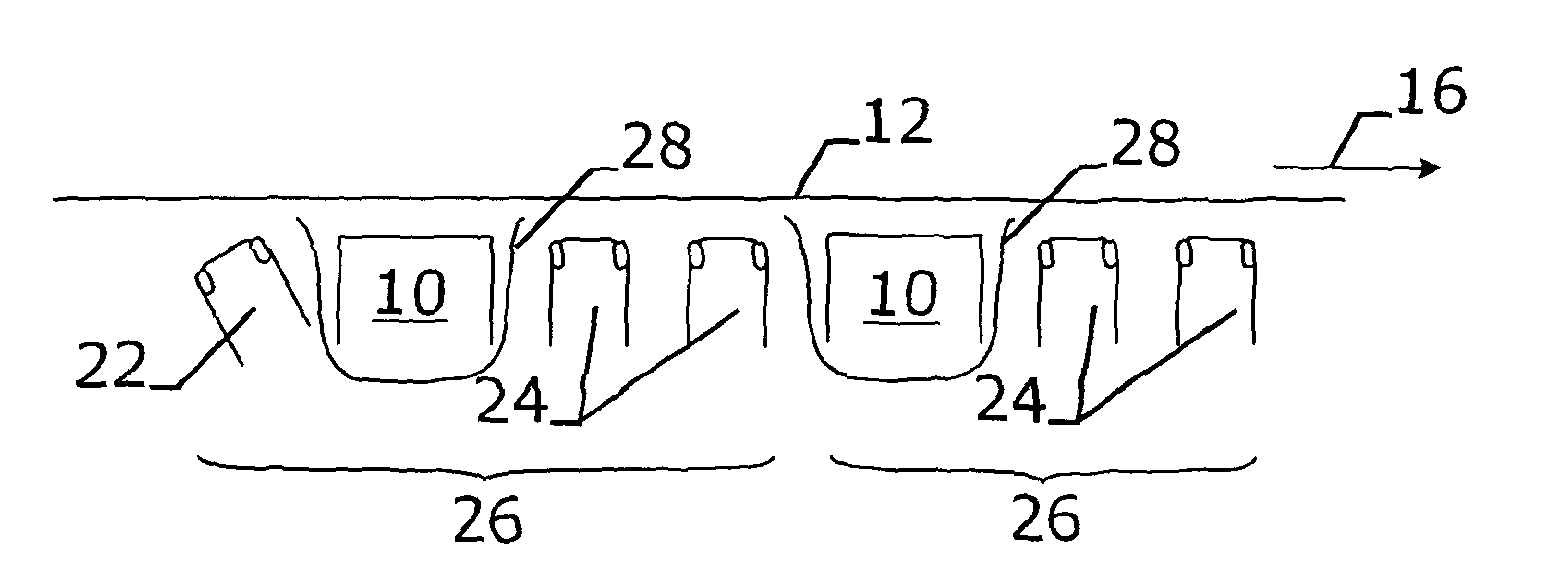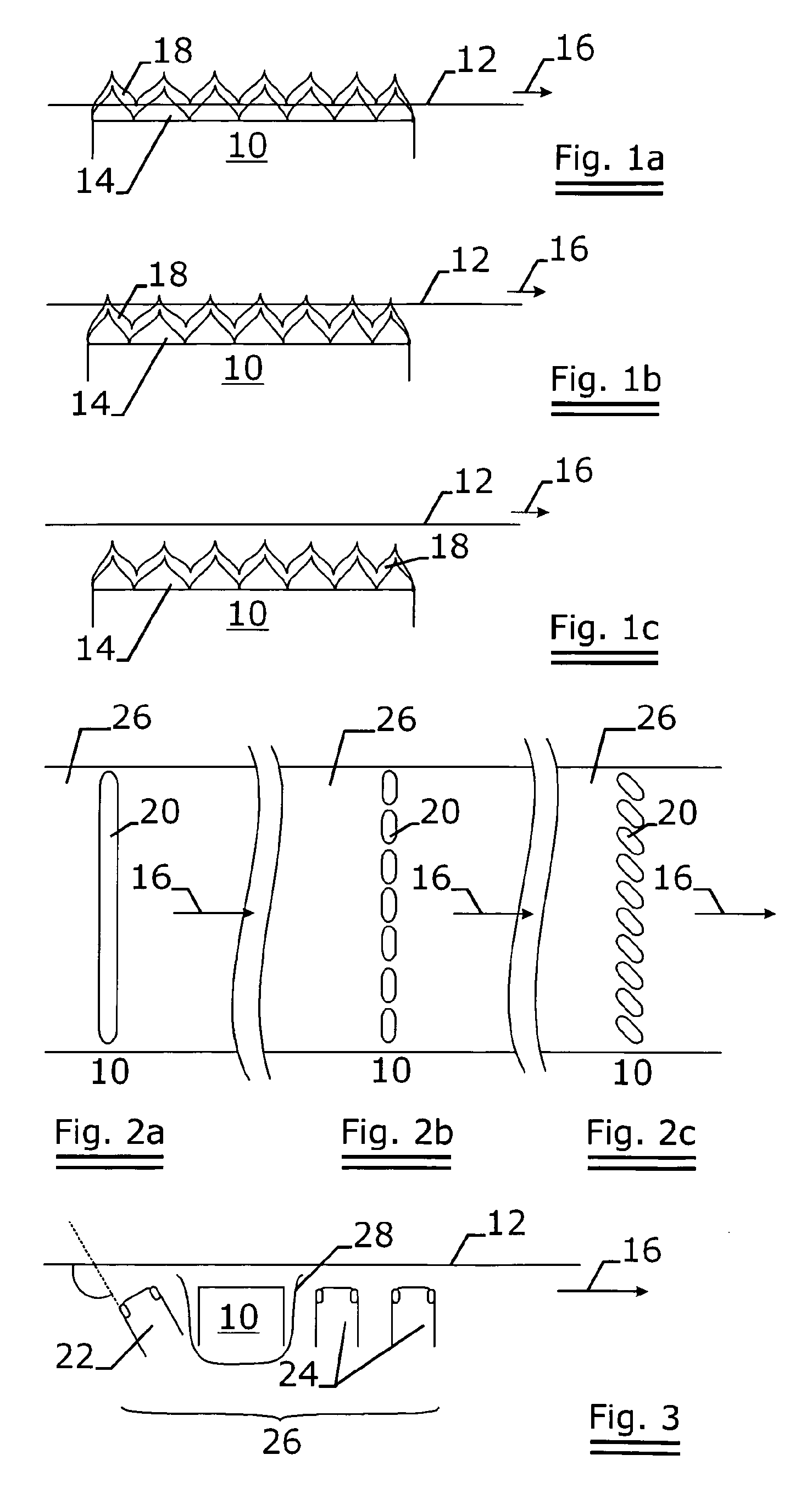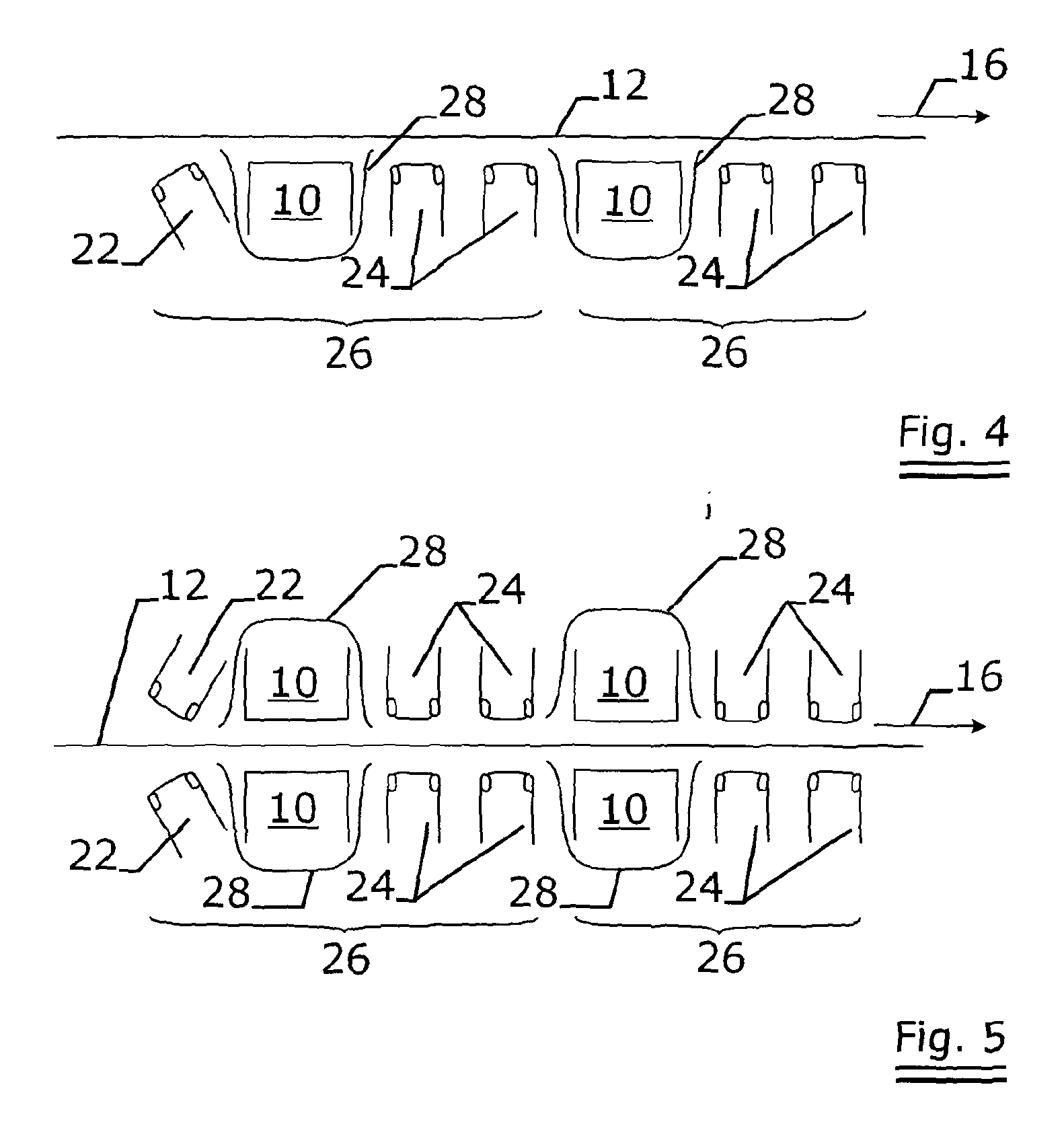Flame Dryer
a dryer and flame technology, applied in the field of flame dryers, can solve the problems of multiple disadvantages of airborne drying sections such as those currently known, low temperature of drying air, and low efficiency of the system, and achieve the effects of improving flexibility, increasing yield, and small siz
- Summary
- Abstract
- Description
- Claims
- Application Information
AI Technical Summary
Benefits of technology
Problems solved by technology
Method used
Image
Examples
Embodiment Construction
[0067]FIG. 1 represents a schematic view of the three different positions the metal fiber burner assembly can have in relation to the passing web. In FIG. 1a the web 12 passes through the flame 14 of the burner assembly 10. In FIG. 1b the web 12 passes through the tip of the flame 14. In FIG. 1c the web passes through the exhaust gases 18.
[0068]In any of the positions as depicted in FIG. 1, the web will pass a temperature zone of more than 600° C., preferably more than 700°, and higher, depending on the distance of the web to the burner assembly. Temperatures of 1500° C. and higher can thus be reached locally.
[0069]By applying such a high temperature to the web to be dried, one achieves a large temperature difference, resulting in a better heat transfer.
[0070]Considering the theoretical equation of heat transfer qx=kx. Ax.DTx, it is evident that because of the large temperature difference, the dimensions of the system can be reduced and / or the efficiency of the drying process can be...
PUM
 Login to View More
Login to View More Abstract
Description
Claims
Application Information
 Login to View More
Login to View More - R&D
- Intellectual Property
- Life Sciences
- Materials
- Tech Scout
- Unparalleled Data Quality
- Higher Quality Content
- 60% Fewer Hallucinations
Browse by: Latest US Patents, China's latest patents, Technical Efficacy Thesaurus, Application Domain, Technology Topic, Popular Technical Reports.
© 2025 PatSnap. All rights reserved.Legal|Privacy policy|Modern Slavery Act Transparency Statement|Sitemap|About US| Contact US: help@patsnap.com



